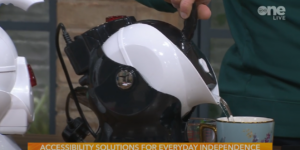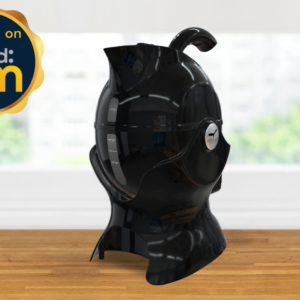In Ireland today, around 300,000 people are currently living with osteoporosis.
With world osteoporosis day this week, we wanted to share more about the condition, it’s causes, symptoms and treatment options available to you here in Ireland. In short, osteoporosis is a condition that affects the inside of your bone. It ultimately weakens your bones or ‘low bone mass’. This happens over several years and can lead to fragile bones and increase the risks of fractures in your hips, spine and wrists.
Women are more likely to develop the condition and this is because women have smaller bones and changes in their level of hormones (especially during menopause). You are more at risk of developing osteoporosis as you get older (generally over 50).
Causes of Osteoporosis:
When it comes to the potential causes of osteoporosis there are a number of unchangeable and changeable factors:
Unchangeable Causes:
Sadly the below causes or risk factors are out of your control and can add to the risk of developing the condition:
- Gender: Women are more likely to develop the condition over men.
- Age: Osteoporosis tends to show up later in life (after 50).
- Race: Caucasians and Asians are more likely to develop the condition over any other race.
- Genes: If a parent or sibling has the condition, the possibility of you developing it is stronger.
- Frame of your body: Those with smaller body frames tend to be at a higher risk of developing osteoporosis
Changeable Causes:
- Body weight: Being underweight can weaken your bones and can also be a risk factor/cause of osteoporosis.
- Lacking in calcium: Calcium is a lifelong friend. We need to ensure that it is a part of our diet and for those that don’t they are at greater risk of developing the condition.
- Lack of exercise: Exercise is good for your bones. For anyone who has little to no exercise, they have a higher risk of developing osteoporosis.
- Alcohol & Tobacco: Excess consumption of both alcohol and tobacco can increase the risk of developing the condition too.
Symptoms of Osteoporosis:
The sad truth about the condition is that there are little to no symptoms until there is a fracture or break. However, thanks to the Irish osteoporosis society, we can share potential signs of undiagnosed osteoporosis.
Back pain:
Many of those who have osteoporosis suffer from broken vertebrae, this can mean broken bones in their spine without even realising it. The back pain experienced could be due to a fracture or collapsed vertebra. This is why its important not to ignore back pain later in life as this could be a potential sign that you have osteoporosis.
Reduction in height or change in body shape:
We all just assume that we get shorter as we age. When it comes to osteoporosis, the broken bones in your back are the reason. Overtime, this can lead to a stooped posture and a humped back. It can also lead to a ‘pot belly’ which means your ribs end up resting on your hip bones because of the stooped posture. Don’t assume that this is because of age, talk to your doctor and they will be able to send you for tests to diagnose the issue.
Unexplained broken bones:
Those with undiagnosed osteoporosis can break their bones very easily. A bone could fracture or break as you roll over in bed or by a sneeze/cough. If this happens, you will need to talk to your doctor. It may not even be osteoporosis but your doctor will be able to rule that out after a scan. Of course, the sooner the better as loss of height, changes in your posture and a hump on your back cannot be reversed.
Treatment Options Available:
Medication:
Many osteoporosis medications that are prescribed by your doctor work to help low the rate at which your bone tissue breaks down. Some can also help speed up the rate your body builds bone tissue too. Talk to your doctor about the options available to you.
Exercise:
An interesting study carried out by Irish scientists from Trinity College Dublin have found new information to support light exercise which can help boost bone growth. This gives way for new possible therapies for bone conditions like osteoporosis.














Leave a Comment